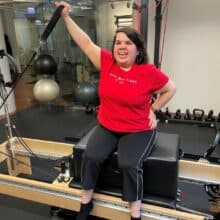How Technology Can Increase Braille Literacy
It has long been known that children who are blind or severely visually impaired encounter many barriers for learning to read and write Braille. For one, a lack of resources such as not having the appropriate tools in developing countries prevents students with vision loss from ever learning the system. Youngsters who are blind in the United States also might not have sufficient instruction in the classroom, primarily due to not being able to spend enough time with a teacher of the visually impaired. This leads to Braille illiteracy and thereby numerous missed opportunities for blind students.
To address this alarming issue, T-Var EdTech, a Boston-based startup company developed an innovative tool. The Read Read is a special device that allows students to learn Braille without an instructor. It uses a combination of tactile and audio feedback to teach Braille. Students at the Perkins School for the Blind recently tested the device, and its developer, Alex Tavares, found that they were highly engaged with the Read Read. Tavares and her team are currently seeking funding and support, and they hope to distribute 400 units to 400 students. Individual devices can also be purchased for $495 each.
As a Braille reader myself, I know how important it is for children who are blind to learn braille at an early age. The fact that I was introduced to the system as a preschooler made it much easier for me to fully grasp the concept. Without a doubt, assistive technology, like smartphones and screen-reading software, have drastically enhanced my independence. However, I still believe that it is important for future generations of individuals who are blind to learn to read and right Braille in order to be successful and independent.
The Read Read is a perfect example of how technology can increase Braille literacy among people without sight. It can help students, instructors and parents alike. Teachers can assign Braille lessons to their students so they can practice independently. The parents and families of blind children can also learn Braille with this easy to use tool. Even adults who recently became blind could find the Read Read beneficial when learning Braille. In other words, the possibilities for this device are countless!
Literacy is important for people with and without vision loss. Devices like the Read Read can be true game changers for people who are blind, as they provide an alternative way of learning Braille. Without a doubt, technology has tremendously benefited people who are blind or visually impaired for many years and it sure is wonderful to see developers who want to use it to enhance and increase Braille literacy.

Sandy Murillo works at The Chicago Lighthouse, an organization serving the blind and visually impaired. She is the author of Sandy’s View, a bi-weekly Lighthouse blog about blindness and low vision. The blog covers topics of interest to those living with blindness and vision impairments. Being a blind journalist and blogger herself, Sandy shares her unique perspective about ways to live and cope with vision loss.





